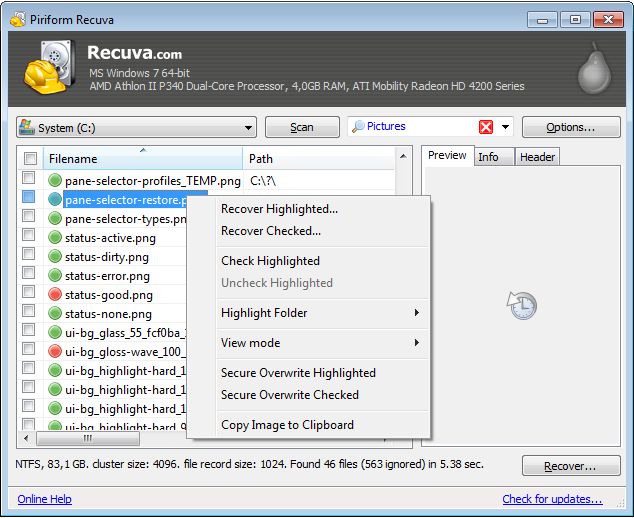Microsoft recently released Microsoft Safety Scanner, a simple on-demand virus scanning tool that works happily alongside other virus protection software. For example, you can use it alongside the always-running anti-virus offered by Microsoft Security Essentials.
See your iPhone Travel History
iPhone Tracker is a new desktop application that allows people to see where their iPhone has logged it’s travels. My iPhone has kept it’s entire travel history, going back to June 2010 when I got my iPhone 4. iPhone Tracker uses the data from your iPhone backups in iTunes.
It’s a little buggy, but still an interesting way to see your travels.
iPhone Tracker is can be downloaded for Mac and Windows.
It appears that the iPhones (like other phones) keep this data to provide GPS applications with your last location and make it easier to quickly attain your current location. If you want to protect your iTunes backup from divulging this information, go to your iPhone Summary page in iTunes and check off Encrypt iPhone backup.
Print From iOS To Any Printer or PDF For Free
While Apple has technically enabled the printer function on iPhones, iPads, and iPod Touches, printing only works currently on 18 specific models of HP printers.
AirPrint Activator
To enable printing to any printer attached to your Mac, use the free AirPrint Activator (formerly AirPrint Hactivator).
It’s a simple program. I’ve been using a beta of version 2 without problems.
PDF Printing
You can print to a PDF by downloading and installing the CUPS-PDF Installer. Share that printer for it to show up on your AirPrint Activator list.
Automator to Move the PDF / Dropbox
The CUPS-PDF Installer prints to your folder:
/Users/Shared/CUPS-PDF/[your account]
or, for iOS devices, to:
/Users/Shared/CUPS-PDF/ANONYMOUS
Those aren’t easy places to find your PDF, so we’ll automatically move those files when they arrive.
Open Automator (Applications – Automator), then select the “Folder Action” template. This will allow you to choose the CUPS-PDF folder where your printed files go by default. Then drag over the library action “Move Finder Items” and choose where you want the file moved to. You might want to move the file to your desktop. I chose to move the files to a Dropbox sub-folder called CUPS Print Jobs, automatically backing them up and making them accessible to me through the Dropbox app or GoodReader app on my iPhone and iPad.
I set up this Automator action for both my CUPS folders that are printed to, the folder from my user account (used when printing to CUPS-PDF from my Mac) and the ANONYMOUS folder (used when printing to CUPS-PDF from iOS devices).
In order to allow Automator to move files from the ANONYMOUS folder, you need to go to it in the finder (/Users/Shared/CUPS-PDF/ANONYMOUS), CTRL-click on it, select Get Info and add yourself to the permissions for that folder.
Other Options
If these instructions are too much for you and you have $19.95 burning a hole in your pocket, you can do the same thing with Printopia 2.
These features also should be appearing in updates from Apple at some point in the future.
Recover Deleted Files
A recent client accidentally deleted several important files and removed them from the recycle bin. Another client had done a system rollback that effectively removed important files.
Happily, deleting a files does not remove them. Only the references to the files are gone. Usually some files can be recovered if you know what file type you’re looking for and if the file location on the hard drive hasn’t been overwritten by new files. This is why it’s important to not install a program to recover files. Just the act of installing something will overwrite the data you want to recover.
I like Recuva Portable, available for free here:
http://www.piriform.com/recuva/builds
The Portable version can run from a USB or CD and does not need to be installed or be copied onto the main hard drive.
Firefox 4
If you’re a Firefox user, you should download Firefox 4, which was released yesterday and provides a much-needed speed boost. Many people had given up on the Firefox due to its sluggishness, instead using Chome or Safari which are built on the faster webkit engine. See Lifehacker’s What’s New and Awesome in Firefox 4 for more information on updates in Firefox 4.



